Shit They Say
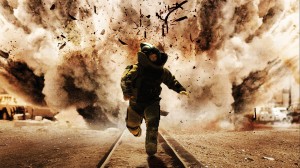 Is it like the movies? Like Blackhawk Down? Platoon? Saving Private Ryan? Mission Impossible? The Hurt Locker? Well, maybe not Mission Impossible, but veterans have heard this question over and over again. These examples come from a YouTube video produced last year during the “shit they say” fad. “Shit Civilians Say to Veterans” perfectly captures what it is like for many veterans talking about the military with civilians.
Is it like the movies? Like Blackhawk Down? Platoon? Saving Private Ryan? Mission Impossible? The Hurt Locker? Well, maybe not Mission Impossible, but veterans have heard this question over and over again. These examples come from a YouTube video produced last year during the “shit they say” fad. “Shit Civilians Say to Veterans” perfectly captures what it is like for many veterans talking about the military with civilians.
The relating military experience to what they have seen in movies is especially common, however, completely understandable. Most civilians, who do not have a family member or friend in the military, typically develop their understanding of the service through popular culture. The interesting thing about this is that some movies have perfectly captured individual elements of military life or culture, but no movie has perfectly captured it as a whole. However, generally speaking, it’s not like what you’ve seen in the movies.
Another topic the video touches on is the idea that everyone in the military is brainwashed or don’t think for themselves. “I could never been in the military, I can’t stand when people try to tell me what to do.” Because your boss at work doesn’t ever do that? Receiving an order from an NCO or Officer is similar to receiving an assignment from your supervisor; the consequences might be different but the general idea is the same. Also, the idea that everyone in the military is conformist is far divorced from reality. Members of the military have diverse opinions and interests.
No, convoys do not get blown up by IUD’s.
“You’re a Republican, right?” There is not a lot of data on how members of the military vote – but they’re not all Republican. In fact, the diversity of political views among military members reflects the diversity of the civilian population. One good measure of this is campaign contributions. According to the Center for Responsive Politics, in 2012 members of the military gave $947,338 to President Obama’s campaign, $753,691 to Mitt Romney’s campaign, and $401,333 to Ron Paul’s campaign. If anything, the contributions to the Paul campaign might show that military members might be more independent thinking that the average civilian voter.
Yes, it’s hot “over there.” But, it also snows over there. Kind of like, over here.
The worst question you could ask a veteran is if they “killed anybody.” More than likely they don’t want to tell you and you probably would rather not know. But, more importantly, this is something that if they want to talk about, it likely will not be with you. If they do talk about it with you, then feel grateful that they truth you that much and don’t try to act like you understand. Just be someone that listens. Try that – and there’s no telling what you might learn from a veteran.
Where They Served
This is a map of where each veteran that has volunteered to be interviewed for the project served while deployed.
Where Their From
This is a map of the hometowns of each veteran that has volunteered to be interviewed for the project.
Military Memories
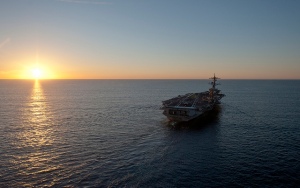 This weekend on the Veterans Book Project Twitter and Tumblr accounts I asked veterans what they missed the most about being on active duty. Some vets replied that they missed the camaraderie and others replied that they missed traveling to foreign countries. For most veterans, even the veterans that disliked the time they spent in the service, there are things they miss about their time in the military. For me, what I miss the most is the unique things that I experienced that cannot be replicated as a civilian.
This weekend on the Veterans Book Project Twitter and Tumblr accounts I asked veterans what they missed the most about being on active duty. Some vets replied that they missed the camaraderie and others replied that they missed traveling to foreign countries. For most veterans, even the veterans that disliked the time they spent in the service, there are things they miss about their time in the military. For me, what I miss the most is the unique things that I experienced that cannot be replicated as a civilian.
When I was deployed out to sea I was able to see things that most people don’t get a chance to. There was the wildlife. I saw whales, dolphins, and flying fish. When a ship was leave the dock in Bahrain hundreds of white jellyfish bubbled out from underneath the hull. The water was so thick with them that it looked like the ocean was carbonated.
Then there was the history that I saw. I saw the first oil well ever drilled in Bahrain, and near by I saw the burial grounds of the ancient tribes that used to inhabit that island. I have gone through the Suez Canal four times, and have seen the ancient towns that line the river on your way into the Red Sea to the memorials to the Israeli-Egyptian war. So much of the history I have seen is the blinding of the ancient with the modern.
Then there were the people I met. There was drinking with English football players in Madrid, Spain, and drinking with German sailors in Dubai, UAE. There was haggling with Turks selling leather, and haggling with Arabs selling gold. There were conversations with an Irish bartender about what is the best Rolling Stone song, and conversations with Muslims about the Israeli-Palestine conflict.
Of course, aircraft carriers are an experience of their own. Landing on an aircraft carrier is an experience unlike any other. While I got to land on an aircraft carrier, I never was able to take off. Watching fighter jets take off and land up close is amazing. The controlled chaos that is the flight deck is beautiful. Learning when to cover your ears is important. If you’re on the smoke deck you wait until you hear the engines thrust, before the deafening of the catapult.
More than anything I miss those moments that are difficult to explain without being there. Then there was the feeling of swimming in the middle of the Pacific Ocean with hundreds of feet of ocean separating me from the ocean floor. There was the morning in the Northern Persian Gulf when the water was as smooth as glass and the dust from the desert made it impossible to tell were the water ended and the sky began.
Photo: The aircraft carrier USS Carl Vinson (CVN 70) is underway in the Pacific Ocean. Carl Vinson is conducting Precision Approach Landing System (PALS) and flight deck certifications. (U.S. Navy photo by Mass Communication Specialist 2nd Class Timothy A. Hazel/Released)
The Importance of Diverse Voices
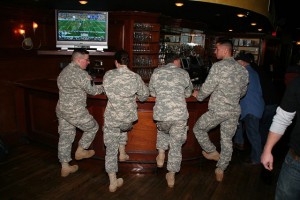 When I had the idea for this project I knew that one of the main goals was to show the diverse nature of America’s veterans. This diversity exists on many levels. There is a diversity of what veterans experience while in the military. The different branches of the military share the common bond that is military service, but each provides a unique experience for those serving.
When I had the idea for this project I knew that one of the main goals was to show the diverse nature of America’s veterans. This diversity exists on many levels. There is a diversity of what veterans experience while in the military. The different branches of the military share the common bond that is military service, but each provides a unique experience for those serving.
The experiences between the different branches of the military differ greatly, as each branch has its own history, language, and traditions. While some of the jobs in each branch are similar, there are differences in how those jobs are performed. An aircraft mechanic in the Air Force will have a difference experience than an aircraft mechanic in the Navy. This diversity of experience is already represented in the veterans who have volunteered for the project so far, as veterans from the Army, Air Force, Navy, and Marines will all share their stories.
Those who serve in the military also come from all over the United States, and even from other countries. Although, it did seem like everyone I met in the military were from California, Ohio, or Texas. Veterans from Arkansas, Alabama, Iowa, and Wisconsin have all signed on for the project. Of course, two veterans from Texas have also signed up.
The experience between the genders also differs. In fact, the dramatic changes have been made to policies concerning women in the military since I first joined in 1999. In the Navy women have been integrated into submarines, and now women are being integrated onto the frontlines in combat roles. The problem with sexual assault in the military has been well documented. There is a female veteran who has volunteered to tell her story, but I would like to hear from more.
The best way to show the depth and complexity of America’s veterans is to interview as many of them as possible and hear the different stories. Which illustrates the most challenging part of this project: determining how to tell all the stories of America’s veterans and weave them into a coherent narrative.
Photo: The Iraq and Afghanistan Veterans of America at the 2007 Veterans Day Parade.
On Combat Veterans
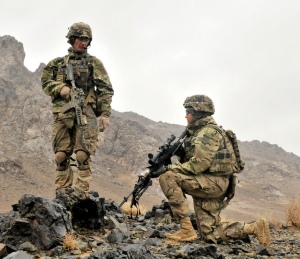 One of the most common questions I have been asked so far by veterans who are interested in sharing their stories is whether or not I am strictly looking for combat veterans. I find this to be an interesting question because implicit within the question is the idea that veterans that served in combat, meaning those veterans that received hostile enemy fire in some form or another and fired their weapon in anger, somehow have a more worthy story to tell or that their experiences are more valuable.
One of the most common questions I have been asked so far by veterans who are interested in sharing their stories is whether or not I am strictly looking for combat veterans. I find this to be an interesting question because implicit within the question is the idea that veterans that served in combat, meaning those veterans that received hostile enemy fire in some form or another and fired their weapon in anger, somehow have a more worthy story to tell or that their experiences are more valuable.
As a veteran who never served in combat, with the exception of my ship firing missiles at distance targets, I have a deep respect for my brothers and sisters who voluntarily put themselves in harm’s way. However, in modern warfare definition of who is a combat veteran has also changed, because in places like Iraq and Afghanistan the idea of a frontline is an antiquated notion. Now soldiers that would not be described as combat troops are exposed to the battlefield as well.
I do not distinguish one veterans service as more valuable or worthy of sharing from another. We all played our role. We all had our jobs. From the grunt to the supply office; from the medic to the intel analyst; from the maintenance crew to the cooks. Everyone had a job to do. Each job was important to the success of the unit.
To answer the question, I am not only looking for combat veterans. I am not looking to examine just the lives of a select group of veterans, but of all veterans.
Photo: 1st Lt. James D. Whitler, a platoon leader from Colorado Springs, Colo., serving with B Company, 2nd Battalion, 23rd Infantry Regiment, walks the line of his unit’s perimeter and checks on Spc. Alan L. Villalobos, an infantryman from Edmonds, Wash., Feb. 26 at a remote Afghan Uniform Police checkpoint near Takhteh Pol, Afghanistan. The unit is securing the checkpoint while assisting the AUP in conducting highway interdiction operations. (U.S. Army photo by Staff Sgt. Shane Hamann, 102nd Mobile Public Affairs Detachment.)
Coming Home
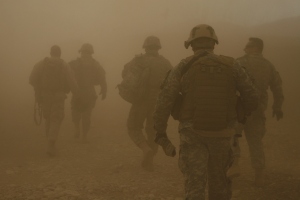 In the summer of 2007 I left the military. I had spent eight years in the Navy, having joined in 1999 immediately after graduating from high school. For nearly all of my adult life I had been defined by my military service. Now I had to redefine myself. I was ready to. I was ready to move on. I was ready to find out who I was. But even as I redefined myself, my military service always remained an important piece of my life.
In the summer of 2007 I left the military. I had spent eight years in the Navy, having joined in 1999 immediately after graduating from high school. For nearly all of my adult life I had been defined by my military service. Now I had to redefine myself. I was ready to. I was ready to move on. I was ready to find out who I was. But even as I redefined myself, my military service always remained an important piece of my life.
In the years since I left the military the wars in Iraq and Afghanistan have gone from the center of the national discussion to a subject that most Americans just seem tired of talking about. Along with the antiwar protest, the yellow ribbons have also seemed disappeared; the ending of the wars may have made the chasm between the military and civilian populations even greater. The wars are over and out of the public’s mind, but for veterans they remain.
In the last decade there have been countless books written about the wars in Iraq and Afghanistan. However, there have been very few books written about the experiences of veterans after the wars, and the majority of those are memoirs. As far as I can tell, outside of academic studies, little has been written to capture the scope of the experiences of America’s veterans in their entirety. This is part of the motivation behind this project.
The driving force behind this project is to simply tell the stories of those that we ask to sacrifice the most. The Marine that fought in Fallujah and after returning home is struggling with PTSD. The soldier that was wounded in Helmand Province and is waiting for medical treatment at the VA. The sailor that served in the Persian Gulf and is struggling to find work. The veterans who have found each other, supported each other, and shared their experiences with each other. These stories need to be told. These stories about coming home.
Photo: Soldiers and Marines walk through rotor wash from a UH-60 Blackhawk Helicopter as they move toward a Forward Operating Base in the village of Darrah-I-Bum, Badghis Province, Afghanistan Jan. 5, 2011. The cadre of personnel accompanied the International Security Assistance Force Command Sergeant Major, Command Sgt. Maj. Marvin L. Hill on a visit to the Marines, sailors, and Soldiers of Special Operations Task Force-West living and working in Darrah-I-Bum. (U.S. Marine photo/Sgt. Brian Kester)
Recent Comments